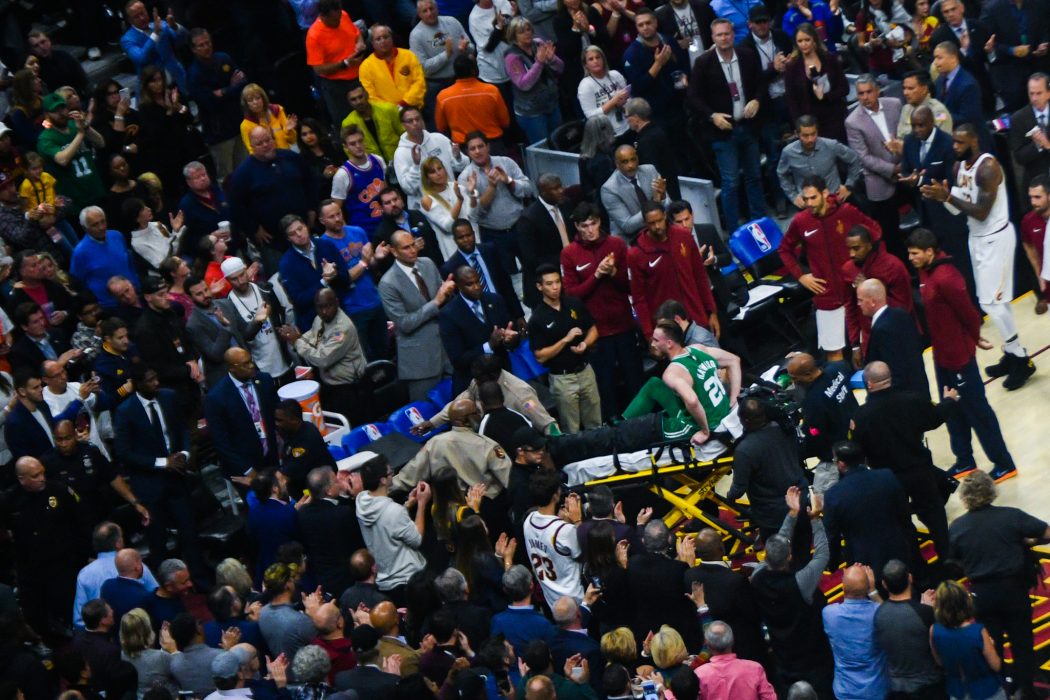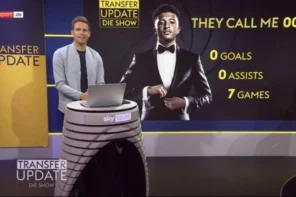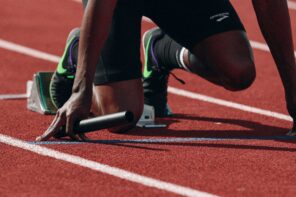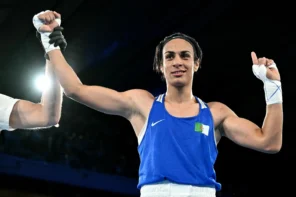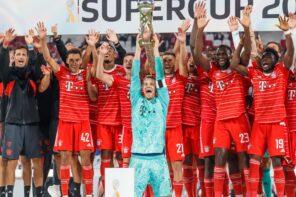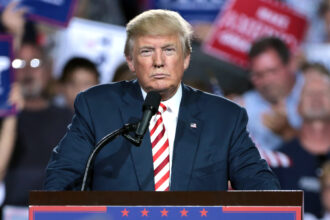Sports fans everywhere bowed their heads in sorrow within the first six minutes of the 2017-2018 National Basketball Association (NBA) season. While going up for an alley-oop, all-star Gordon Hayward collided with two players and landed awkwardly, leading to a gruesome ankle injury. Just a day later we saw another season-ending injury take place, this time to Brooklyn guard Jeremy Lin, who ruptured his patella tendon. These injuries underscore the ongoing discussion about their increasing incidence in sports. What can the league do to prevent these injuries? What effect do they have on the players? What can players do to return from them? The answers are anything but simple.
The NBA can’t really do anything to prevent these injuries if they want to preserve the nature of the sport. The majority of severe basketball injuries occur through accidental contact or through a player’s own landing from a jump. Beyond that, the NBA seems to be adding rules surrounding injuries as they become a problem. Unless the league opts to ban jumping, they will unfortunately be part of the game.
Over the off-season, Bosh was faced with the decision between basketball and life.
The effect these injuries have on the players is not a straightforward answer. It varies based on the player’s character, age, contract situation, and many other factors. Some rush back because the court is where they’re comfortable – missing that part of their lives makes them feel lost.
Though he never suffered a season-ending injury, Chris Bosh is the perfect example of a player whose identity is his athleticism. Following twelve seasons, ten as an all-star, Bosh was hospitalized and ruled out for the final three months due to a blood clot in one of his lungs. He willed himself to return the following season and played until the half-way mark, when another blood clot forced him to opt out of the all-star game. At this point, the team and physicians suggested he sit out the rest of the season, at the very least. Over the off-season, Bosh was faced with the decision between basketball and life. He could return to the Miami Heat for another season, or retire and avoid the risk another season would pose on his health. Bosh chose to return to the Heat before failing the team’s physical examination. His decision to continue playing basketball despite not being healthy enough is a clear indication that Bosh has a void to fill. Basketball is his identity, and when it came down to it, he chose basketball over health.
The next three years saw failed comebacks for Oden, leaving him unemployed and asking if it was worth rushing back to the game in his first two seasons.
Other players are eager to get back on the basketball court due to social pressure. Just like every first overall pick, Greg Oden, had all eyes on him and these fans wanted to see Oden become the NBA’s next superstar. He underwent a knee surgery just a month before the start of his first season, sidelining him for the year. His delayed debut added pressure for him to live up to the hype, and an injury within the first fifteen minutes of his NBA career did not help at all. Oden and his team, the Portland Trailblazers, had a mutual understanding that they wanted him on the court as soon as possible, so they did everything in their ability to accelerate his rehabilitation. Following his return, Oden went on to re-injure himself several times that season, and end his next two seasons early with knee injuries. Oden’s fans and the Trailblazers organization lost faith in their first overall pick, releasing him from the team less than five years after being drafted. The next three years saw failed comebacks for Oden, leaving him unemployed and asking if it was worth rushing back to the game in his first two seasons.
All players can really do to return from these injuries is give it time. Athletes like Paul George and Joel Embiid suffered their fair shares of injuries, but despite the pause in their athletic careers and the social pressure for a quick and effective return, both players took an appropriate amount of time off. Rather than rushing the rehabilitation process on his broken leg, George chose to train other elements of his game in the meantime. He let his leg heal and worked on passing and defence, which helped him return as a better playmaker. He achieved a career-high 4.1 assists per game despite the reduced playing time.
This sets an important precedent for other young and promising athletes worrying about contract opportunities following an injury.
After Embiid suffered another injury in his first season, he and the team opted to let it heal rather than listen to the voices calling the young star a “bust” and saying the team should rush the player back onto the court. This has allowed Embiid to start the new season strong and healthy. Regarding his contract situation, the Philadelphia 76ers adopted Embiid’s attitude of trusting the process, extending him to a maximum-value contract. This sets an important precedent for other young and promising athletes worrying about contract opportunities following an injury. Patiently waiting to heal can help an athlete return as a better player, maybe even with a long-term contract.
When it comes to basketball injuries, time heals all wounds. But with money, prestige, and a position in the team’s rotation at perceived risk, time off is harder for athletes to reconcile. The sports industry is notorious for fans with high expectations, and in a cutthroat entertainment sector, the competition for the most exciting and intense viewing experience means injuries are “part of the game.” Contact sports such as hockey and football are receiving greater scrutiny over this aspect, as head injuries take more than time to heal. But for basketball, players need to approach their decision between sports and health with a cost-benefit analysis. Accelerating rehab can increase the chance of re-injury – the best course of action is to take one step back and two steps forward.

